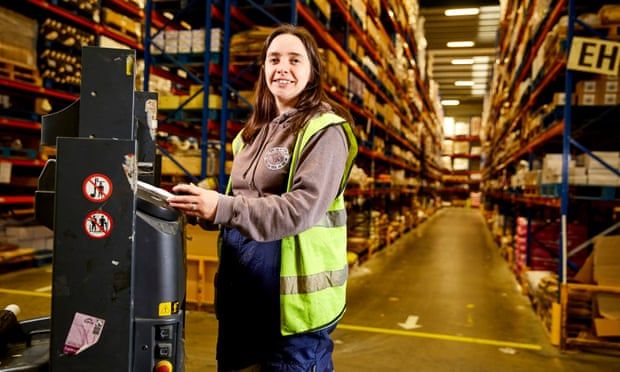Australia has long been recognized as a welcoming destination not only for skilled professionals but also for partners and families seeking a fresh start together. This comprehensive guide delves into the diverse visa options available for couples and families, emphasizing essential eligibility criteria, application processes, and the benefits of reunification. Designed with search engine optimization in mind, this article covers everything from initial steps to advanced advice on securing an Australian partner or family visa, while comparing these options with similar international alternatives.
Whether you are looking to join your spouse, sponsor a family member, or explore long-term migration opportunities, understanding your options is the first step towards making informed decisions about your future in Australia.
Results
#1. Which continent are you currently living in?
#2. What type of work are you most interested in?
#3. What is your preferred work location?
#4. What is your current employment status?
#5. What is your highest completed level of education?
#6. What is your gender?
Overview of Australian Partner and Family Visas
Australia offers a range of visas designed to reunite partners and families. These visas include partner visas (both temporary and permanent), prospective marriage visas, and various family reunion options that cater to different familial relationships. The partner visa stream is tailored to those in genuine relationships, requiring evidence such as shared finances, living arrangements, and a mutual commitment to a long-term relationship. The family visa options, on the other hand, provide pathways for parents, children, and other family members of Australian citizens or residents to migrate.
Key Features of the Visa Options
- Partner Visa (Subclass 820/801): Applies to applicants who are in a de facto relationship or married to an Australian citizen, permanent resident, or eligible New Zealand citizen. This visa is often processed in two stages: a temporary visa followed by a permanent residence visa.
- Prospective Marriage Visa (Subclass 300): Designed for individuals engaged to Australian citizens or residents, this visa allows the applicant to enter Australia to marry their partner within a stipulated period.
- Parent and Child Visas: These visas cater to parents of Australian citizens or permanent residents, ensuring family unity across generations. Other family visas extend to dependent children and remaining relatives.
In navigating your application, it is essential to verify that your relationship qualifies under the relevant category, as each visa option has distinct eligibility criteria. For example, while the Australian partner visa emphasizes the authenticity of your relationship, the UK Spouse, Partner, and Family Visas provide similar avenues in another destination, offering a point of comparison regarding procedural similarities and differences.
Eligibility and Application Process
Determining Your Eligibility
Before embarking on your visa application, it is vital to assess your eligibility. The Australian Department of Home Affairs requires that you provide comprehensive documentation to prove the genuineness of your relationship. Common requirements include:
- Proof of Relationship: Joint bank statements, shared lease or mortgage documents, and photos or letters that illustrate your ongoing commitment.
- Character and Health Requirements: Applicants must undergo health examinations and provide police clearance certificates to establish their suitability for entry into Australia.
- Financial Stability: Evidence showing that the sponsoring partner is financially stable or that the applicant can support themselves, thereby lessening the burden on public funds.
For those exploring family migration pathways, the process may vary. For instance, the Canada Family Sponsorship Program emphasizes similar documentation and support mechanisms, highlighting that many countries maintain stringent yet comparable standards for family reunification.
The Application Process
The application process involves multiple stages:
- Preparation: Gather all required documentation, including proof of identity, relationship, and financial stability.
- Lodgment: Submit your application online, ensuring that all forms are completed correctly. Online submission helps expedite the processing times and reduce errors.
- Assessment: Immigration authorities will scrutinize your documents and often arrange interviews to verify the authenticity of your relationship or family connection.
- Decision: Once your application is assessed, you will receive either a temporary visa or progress directly to a permanent visa, depending on the visa subclass.
Applicants are advised to consult with migration agents or legal experts to ensure compliance with the latest immigration policies.
Documenting Your Relationship: Evidence and Best Practices
The strength of your documentation can significantly influence the outcome of your visa application. It is essential to provide clear and consistent evidence that your relationship is genuine and ongoing. Consider the following best practices:
- Detailed Relationship History: Write a timeline of your relationship, documenting important milestones such as the time and place you first met, vacations taken together, and plans for the future.
- Proof of Shared Responsibilities: Joint financial accounts, shared property ownership, and evidence of living together bolster your application.
- Social and Cultural Engagements: Invitations or photographic evidence of participation in family events, community gatherings, or celebrations can illustrate the depth of your relationship.
These approaches ensure that your submission is robust and demonstrates your commitment. In a similar vein, when applying for specialized employment visas, professionals must also provide in-depth documentation, much like USA Family-Based Immigration Green Cards which require comprehensive family evidence, albeit with a different focus.
Professional Assistance and Preparing for the Visa Process
Navigating the complexities of the visa process can be daunting. Many applicants choose to enlist the help of registered migration agents, who can guide you through the intricacies of documentation, legal interpretations, and compliance with Australian immigration law.
Why Consider Professional Assistance?
- Expertise: A registered agent is up-to-date with the latest legislative changes and procedural requirements.
- Efficiency: Professional assistance ensures that your application is thorough, reducing the potential for delays or denials due to incomplete documentation.
- Peace of Mind: With expert support, you can focus on preparing for your new life in Australia while experts handle the legal and administrative complexities.
Additionally, professional advisors can help you bridge any gaps in your documentation, ensuring that you present the strongest case possible. For a different perspective, consider the process described in Family Reunification Visas in Germany, where professional legal consultation is equally invaluable.
Navigating the Financial and Health Requirements
Another crucial area of focus in your application is meeting the financial and health requirements outlined by the Australian government.
Financial Assessment
The sponsoring partner must demonstrate a certain level of income or assets to support their partner or family. This requirement is in place to ensure that the newcomer will not rely heavily on public funds upon arrival.
- Income Evidence: Payslips, tax returns, and bank statements are essential documents that prove steady income.
- Asset Verification: Property ownership, investments, and other assets contribute to your overall financial stability.
Health Checks and Insurance
Applicants must undergo comprehensive health examinations to check for conditions that may pose a risk to public health. In some cases, health insurance is also mandatory to cover any potential treatment costs post-arrival.
Ensuring that you meet these requirements can streamline the application process. Similar financial and health checks are a critical part of other visa systems worldwide, such as those outlined in Family Reunification Visas in Germany, underscoring the universality of these concerns.
In-Depth Look at the Application Process Timeline
The timeline for processing Australian partner and family visas can vary based on several factors, including the completeness of your application, the volume of applications processed by the Department of Home Affairs, and any additional assessments required.
Typical Processing Stages
- Initial Lodgment and Acknowledgement: After you submit your application, you will receive an acknowledgment. This confirms that your application is under review.
- Document Verification and Interview: During this stage, immigration officials may request further information or a personal interview to verify the details provided.
- Temporary Visa Grant: For partner visas, a temporary visa is generally granted first. This allows the applicant to live in Australia while the permanent visa application is processed.
- Permanent Visa Decision: Finally, after a thorough review, the permanent visa is granted, granting long-term residency.
Patience and meticulous attention to detail are essential during this period. Mistakes or omissions can lead to delays or even application refusals. It is recommended to follow up periodically with your migration agent to track the progress of your application.
Comparative Analysis: Australian vs. International Family Visas
Australia’s partner and family visa options are robust, yet they are part of a global landscape of immigration policies. In comparing these with international alternatives, applicants can gain valuable insights into the strengths and challenges of each system.
Comparing Approaches
Many Western countries offer family reunification and partner visas with requirements similar to those in Australia. For example, while Australia emphasizes cohabitation and shared financial commitments, other nations may focus more on pre-marriage documentation and other relationship facets. Notably, programs such as USA Family-Based Immigration Green Cards and Family Reunification Visas in Germany highlight the importance of family ties and long-term commitments.
This comparative insight reinforces the idea that while the documentation requirements may differ, the underlying objective—to reunite families—remains consistent globally. By learning from these international models, applicants can better prepare their own documents and plan for potential challenges in the Australian process.
Social and Economic Benefits of Family Reunification
Reuniting families is not merely a bureaucratic exercise; it brings tangible social and economic benefits to Australia. From strengthening community ties to contributing to the economy, family reunification is a cornerstone of Australia’s multicultural policy.
Key Benefits
- Economic Contribution: When families are reunited, the combined household income often results in increased spending and investment in the local economy.
- Social Integration: Families that migrate together are more likely to integrate successfully into Australian society. They contribute to community cohesion and cultural diversity.
- Mental Health and Well-being: Separation from loved ones can lead to stress and uncertainty. Family reunification helps alleviate these issues, promoting overall well-being and productivity.
Furthermore, successful family migration stories can inspire future applicants and highlight the tangible benefits of Australia’s inclusive policies. This stands in contrast to more fragmented immigration systems elsewhere, where family members may be dispersed due to restrictive visa categories.
Incorporating Supplementary Resources: Tables for Extended Opportunities
As you consider your migration journey, it may also be useful to explore supplementary opportunities that may support your visa application or offer alternative ways to establish residency and professional growth.
Below are three tables designed to provide additional insights into job-related opportunities, educational scholarships, and alternative visa options. These tables incorporate topics not previously mentioned in the main text, ensuring that you have access to a wide array of related information without redundancy.
Table 1: Job Opportunities in Australia
Below is a curated list of job opportunities that often come with visa sponsorship benefits in Australia. These opportunities can provide both financial support and a pathway for those who may decide to supplement their family visa route with professional employment.
| Job Opportunity | Salary Expectation (AUD) |
|---|---|
| Chef Positions in Australia: Visa Sponsorship for Culinary Professionals | 55,000 – 70,000 |
| Truck Driver Jobs in Australia: Visa Sponsorship & Licensing | 60,000 – 80,000 |
| Early Childhood Educator Jobs in Australia with Visa Sponsorship | 50,000 – 65,000 |
| Skilled Trades Apprenticeships in Australia with Visa Pathways | 48,000 – 62,000 |
These roles not only provide competitive salaries but also offer a stepping stone for long-term career advancement within Australia.
Table 2: Scholarships & Educational Opportunities
For those considering educational pathways alongside family migration, the following scholarships and study-related opportunities may prove beneficial. These opportunities can ease the financial burdens associated with international study and eventual settlement in Australia.
| Scholarship/Educational Opportunity | Eligibility/Details |
|---|---|
| Top 10 Fully Funded Scholarships for International Students Worldwide (2025-2026) | For outstanding international students seeking full funding. |
| How to Secure Scholarships in Canada for Masters & PhD Programs | Excellent academic records required; competitive selection process. |
| USA University Scholarships for International Undergraduates | Targets high-achieving undergraduates planning to study in the USA. |
| Government Scholarships in Europe | For students who meet the rigorous academic and language requirements. |
| Scholarships in Australia Without IELTS/TOEFL | Special opportunities for students exempt from traditional language tests. |
These scholarships present invaluable resources for applicants planning further studies or research and intending to eventually settle in Australia.
Table 3: Other Visa Options and Sponsorship Pathways
Alongside family visas, there exist alternative visa options that can sometimes complement your transition into the Australian lifestyle. The table below outlines some prominent visa categories that offer distinct pathways to residency.
| Visa Option | Key Feature |
|---|---|
| Working Holiday Visa Jobs in New Zealand: Top Sectors | Ideal for young professionals seeking temporary work and travel experiences. |
| Post-Graduation Work Permit (PGWP) in Canada | Allows international graduates to gain valuable work experience post-study. |
| Australia Subclass 482 (TSS) Visa: Temporary Skill Shortage Guide | Facilitates short-term employment for skilled workers in Australia. |
| Understanding the Blue Card Scheme for Working in the EU | Offers long-term residency for highly skilled workers in the European Union. |
Exploring these alternatives broadens the spectrum of possibilities available, ensuring that your migration journey is as flexible and resilient as possible.
Comparing Visa Processing and Future Pathways
Understanding the nuances in processing times, eligibility criteria, and transitional benefits between temporary and permanent visa categories is crucial. Many applicants find that beginning with a temporary visa allows them to settle down, find employment, or even pursue higher education, which can ultimately smooth the transition toward permanent residency.
Transitioning from Temporary to Permanent Residency
- Temporary to Permanent Pathway: Often, the Australian partner visa is granted temporarily (subclass 820) and requires a waiting period while your permanent visa (subclass 801) application is processed. Demonstrating ongoing relationship commitment during this period is critical.
- Monitoring Changes in Policy: Immigration policies are subject to change. Staying informed through official channels and consulting migration experts can help you adjust your plans accordingly.
- Long-Term Planning: Once permanent residency is secured, many find that it opens up additional pathways, such as citizenship and greater employment opportunities, ultimately contributing to a more integrated lifestyle in Australia.
For context, reviewing alternative immigration programs—like USA Family-Based Immigration Green Cards—can offer a broader perspective on how different countries prioritize family reunification.
The Impact of Family Visas on Economic Stability and Well-Being
Reuniting with loved ones through partner and family visas carries significant implications for both individual well-being and the broader economy. Apart from the emotional benefits, family migration contributes to community integration and economic diversity.
Economic Benefits
- Enhanced Workforce Participation: When families migrate together, both partners may eventually join the workforce, thereby boosting household income and contributing to the national economy.
- Increased Consumer Spending: With additional income streams, reunited families tend to spend more on local goods and services, which stimulates economic growth.
- Long-Term Investment: Stable family units are more likely to invest in housing and education, creating a positive ripple effect across various sectors.
Social Benefits
- Stronger Community Ties: Families that enter Australia together have a better chance of establishing robust community networks, enhancing social integration.
- Improved Mental Health: The alleviation of stress related to separation can lead to better mental health outcomes, which in turn supports better overall productivity.
- Cultural Diversity: Family migration enriches Australia’s multicultural fabric, bringing a wealth of traditions, languages, and experiences that contribute to national identity.
Observing such impacts highlights why Australia continues to prioritize family and partner visas, as they ultimately foster stronger, more vibrant communities.
Future Trends and the Evolving Landscape of Immigration
The Australian immigration system is continually evolving to meet global demographic shifts and economic demands. Recent legislative changes and policy updates indicate a move toward more flexible, responsive visa systems that accommodate the complexities of modern relationships and family structures.
Key Future Trends
- Digital Processing Enhancements: The Department of Home Affairs is increasingly employing online platforms and digital tools to facilitate smoother processing of visa applications, reducing turnaround times and enhancing communication.
- Policy Adjustments: New policy initiatives aim to widen the eligibility criteria and reduce bureaucratic hurdles, making it easier for genuine applicants to join their families in Australia.
- Integration and Support Programs: Alongside visa grants, there is a growing emphasis on integration programs that assist newcomers in adapting to the local culture, finding employment, and learning English.
Looking globally, strategies similar to those in Family Reunification Visas in Germany are being adopted by various countries, reinforcing the notion that family unity is a universal priority.
Key Considerations and Expert Advice
Successful migration depends on a clear understanding of the process and a proactive approach to overcoming potential challenges. To help ensure the best outcomes, consider these key pieces of advice:
- Early Preparation: Begin gathering your documentation well in advance. Identify all the evidence required to demonstrate the genuineness of your relationship or family ties.
- Seek Expert Guidance: Whether through a migration agent, legal consultant, or community support group, access to expert advice is invaluable. Each case is unique, so tailoring your application to your personal circumstances can significantly enhance your chances.
- Stay Informed: Immigration policies can change rapidly. Regularly check the official Department of Home Affairs website and subscribe to updates from reputable immigration forums.
- Build a Strong Support Network: In addition to professional assistance, having a support network of family and friends can provide not only emotional support but also practical help during the application process.
Incorporating these strategies into your planning can make a significant difference in the success of your application. For those who are considering a mix of family and employment pathways, a detailed case study on Family Reunification Visas in Germany may offer valuable insights.
Frequently Asked Questions (FAQs)
What is the difference between a partner visa and a prospective marriage visa?
A partner visa caters to individuals who are already in a de facto relationship or married to an Australian citizen or permanent resident, while a prospective marriage visa allows a fiancé(e) to enter Australia to marry their partner within a specified period.
How long does it typically take to process a partner visa?
Processing times can vary widely. Temporary partner visas (subclass 820) may take from 18 months to several years, after which a permanent partner visa (subclass 801) is processed.
Can I work while waiting for my permanent visa?
Yes, many temporary visas come with work rights. However, it is important to verify the specific conditions attached to your visa.
Do I need a migration agent to apply?
While it is not mandatory, many applicants find that engaging a registered migration agent can help streamline the process and ensure that all documentation meets the required standards.
For more detailed personal guidance, consider exploring resources such as Canada Family Sponsorship Program to see how structured support models have benefited other families.
Conclusion
🎓 Must Read
The pathway to reuniting with your partner or family in Australia involves careful planning, thorough documentation, and a clear understanding of the eligibility requirements. Whether you are applying for a partner visa, prospective marriage visa, or a broader family reunification visa, staying informed and seeking professional advice can significantly enhance your chances of success.
Australia’s immigration system is designed to welcome families and create a strong, integrated society. By leveraging the comprehensive options available—ranging from digital processing improvements to enhanced support programs—you can navigate the complexities of the process with confidence. Ultimately, a well-prepared application is the first step toward a new life filled with opportunities and enriched cultural experiences.
For more detailed information and expert advice on other immigration topics, it’s also beneficial to compare these options with international programs such as USA Family-Based Immigration Green Cards, which demonstrate the varying approaches across borders.
We hope this guide has provided you with a clear roadmap and practical insights on Australian partner and family visa options. Your journey toward reunification is significant—not only for your personal happiness but also for contributing to Australia’s vibrant and diverse community.









